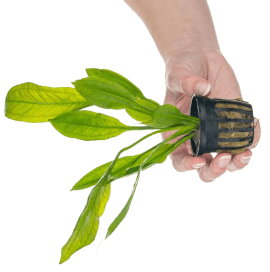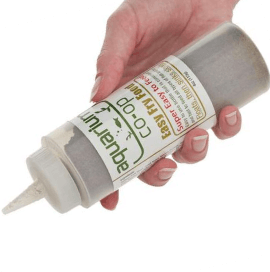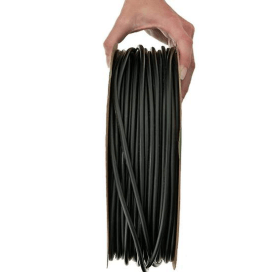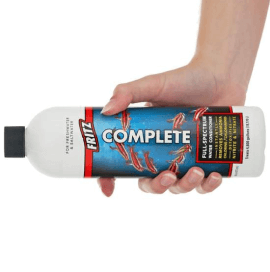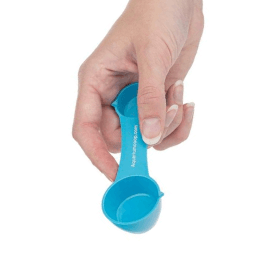How to Treat Parasites in Aquarium Fish
When you buy an aquarium fish, did you know that it has traveled from a fish farm to a wholesaler to a pet store before it got to you? That means that there’s a high likelihood that it may have picked up some kind of internal or external parasite along the way. Wild-caught fish are especially prone to carrying parasites, if not multiple types at the same time. Unfortunately, most of the time aquarium fish don’t stay at the store long enough to make sure they are free of parasitic diseases. If your fish has visible parasites on its body, a swollen abdomen, skinny disease, hole-in-the-head, or strange-looking, discolored poop, you may need to treat it with one of the following antiparasitic medications.
1. Ich-X

Hikari is well-known for their high-quality fish foods, but they also produce excellent fish medications under their Aquarium Solutions and Pond Solutions product lines. After testing dozens of ich medicines in the United States, we have determined that Aquarium Solutions Ich-X is one of the most effective formulations for treating ich (or white spot disease), other external protozoan parasites, and mild fungal infections. In fact, we use Ich-X to proactively treat all fish that enter our fish store before they get sold to customers. Its active ingredients are formaldehyde and malachite green chloride, and it is safe for scaleless fish, invertebrates, and live plants.

If your fish looks like it’s covered in little, white grains of salt, it could be ich and needs to be treated immediately. That’s why it’s good to always have first aid medications like Ich-X on hand.
To use Aquarium Solutions Ich-X, follow these steps:
- Clean the aquarium and do a water change. Remove any chemical filtration (like activated carbon or Purigen) and UV sterilizers.
- Dose the aquarium with 1 teaspoon (5 ml) of Ich-X per 10 gallons of water.
- Every 24 hours, change one-third of the tank water and repeat the dose.
- Continue daily treatment for at least 3 days after you last see any signs of disease.
For more details on how to recognize and treat ich, read our full article here.
2. ParaCleanse

Fritz ParaCleanse is another well-tested medication that we use to preventatively treat all new fish that enter our retail store, and it can be safely used in conjunction with Ich-X. It is used to cure internal parasites and some external parasites, such as:
- Tapeworms (e.g., skinny or wasting disease)
- Gill and skin flukes (e.g., Gyrodactylus species)
- Hole-in-the-head (HITH) disease (e.g., Hexamita and Spironucleus species)
ParaCleanse contains praziquantel to take care of worms and flukes, as well as metronidazole to kill certain bacteria and protozoans. It is safe for scaleless fish, fish fry, snails, shrimp, and aquarium plants. If you suspect your fish has one of these parasites, follow the manufacturer’s directions and do not treat with half doses (or else the medicine may not be effective).
- Clean the aquarium and remove any chemical filtration and UV sterilizers.
- On Day 1, dose 1 packet of ParaCleanse per 10 gallons of water.
- On Day 3, dose 1 packet of ParaCleanse per 10 gallons of water.
- On Day 5, perform a 25% water change on the aquarium.
- Wait 2 weeks before administering any other medications so that your fish have a chance to recover and gain weight. To help them pass the dead worms, feed foods with fiber and roughage, such as brine shrimp, daphnia, algae wafers, and Repashy Soilent Green.
- After 2 weeks, repeat the 5-day treatment by following Steps 1-4. (Eggs are not affected by the medicine, so we have to wait for the new worms to hatch out. This 2-week interval is why it’s hard for stores to completely get rid of internal parasites before fish are sold.)
- [Optional] Doing the 5-day treatment twice gets rid of the majority of parasites. If you really want to make sure your fish are clean, wait 2 more weeks and repeat Steps 1-4 for a third treatment.

Tapeworms eggs are not affected by most medications, so we have to wait until the new worms hatch and can be treated. That is why we recommend redosing after 2 weeks once they have hatched.
ParaCleanse is not very harsh, so multiple treatments are generally safe for your fish. However, it can be a little expensive on the wallet, so try putting your fish in a smaller quarantine tank so that there is less water volume to dose.
Is it better to medicate the fish’s water or their food? Medicated fish food is a little tricky to manage. Sick fish often won’t eat very much (or at all) because they don’t feel well. Also, it can be hard to monitor how much medicated food each fish is getting, so some fish may be consuming too much medicine while others are consuming too little. If you are only treating one fish that is still eating well, then medicated food might be a viable option. If you are treating multiple animals, we recommend medications that dissolve in the water and treat the whole tank so that we can ensure every animal gets the right concentration.
How does this treatment plan work with the quarantine med trio? If you have proactively treated your new fish with a 7-day soak using ParaCleanse, Ich-X, and Maracyn, then follow the above instructions starting with Step 5.
3. PraziPro

PraziPro has a higher concentration of praziquantel, so we recommend using it when ParaCleanse isn’t quite strong enough or if we’re seeing a problem with certain shrimp parasites like Vorticella and Scutalleria japonica.
Similar to ParaCleanse, PraziPro is safe for fish, invertebrates, plants, and beneficial bacteria, and it’s primarily used to treat tapeworms, flukes, flatworms, and turbellarians. To use PraziPro, follow these steps:
- Clean the aquarium and remove any chemical filtration and UV sterilizers.
- Shake the bottle well and dose 1 teaspoon (5 ml) of PraziPro per 20 gallons of water.
- Let the medication sit for 7 days. Repeat the dosage as necessary, but no more than once every 3 days.

Wild-caught fish often contain lots of parasites that may require three rounds of treatment to fully deworm.
In our personal tanks, we’ve use PraziPro as part of the deworming process for our puffers. First, we treat ParaCleanse for 5 days and then wait two weeks. Then we do a second 5-day treatment of ParaCleanse and then wait a month. Afterwards, we use the 7-day treatment of PraziPro as our final deworming step.
4. CyroPro

Pond Solutions CyroPro is specially formulated to treat external parasites like fish lice (e.g., Argulus species) and anchor worms (e.g., Lernaea species). The active ingredient of cyromazine works by preventing parasitic insects and crustaceans from molting their exoskeletons. Therefore, it is safe for fish, plants, and snails, but consider removing your shrimp, crayfish, and other crustaceans before treatment.
- Do a water change on the aquarium or pond and remove any chemical filtration and UV sterilizers.
- Shake the bottle well and dose 1 teaspoon (5 ml) of CyroPro per 50 gallons of water.
- Change the water and repeat the treatment every 7 days for at least 21 uninterrupted days. (Restart the treatment regimen if you miss a treatment day.)

External parasites like fish lice (seen above) and anchor worms are visible to the naked eye and are often found on pond fish like goldfish and koi.
The water changes before each dose of CyroPro helps to refresh dissolved oxygen levels, remove excess nutrients, and reduce the population of water-borne parasites.
5. Expel-P

Fritz Expel-P is a fast-acting dewormer used to specifically treat parasites such as planaria, roundworms and nematodes (such as camallanus red worms), nodular worms, and hookworms. Symptoms in infected fish can include an emaciated body, swollen abdomen, red worms leaking out of the fish's anus, loss of appetite, or rapid breathing. The active ingredient is levamisole hydrochloride (HCl), which causes paralysis and death of the worms, but it will not harm your biological filtration, aquarium plants, invertebrates, or healthy fish.

Camallanus red worm treatment
Like Fritz ParaCleanse, multiple treatments are recommended to ensure that all the eggs have hatched and can be affected by the medication. Follow the manufacturer's instructions and recommended dosage:
- Clean the aquarium and remove any chemical filtration and UV sterilizers.
- Dose 1 packet of Expel-P per 10 gallons of water.
- After 24 hours, do a 25% water change, making sure to vacuum the substrate with an aquarium siphon to remove any paralyzed worms.
- After 1 week, repeat the treatment to get rid of any new worms that hatched out.
- Continue the weekly treatments as needed until the worms have disappeared or the fish are regaining weight again.
Bonus: Aquarium Salt

If you do not have access to these medications, aquarium salt is useful for the treatment of external parasites (but isn’t as effective for internal parasites). The salt works by dehydrating the parasites to death before the fish (which have more mass and stored water) are affected. For complete instructions, see our full article on how to treat sick fish with salt.
